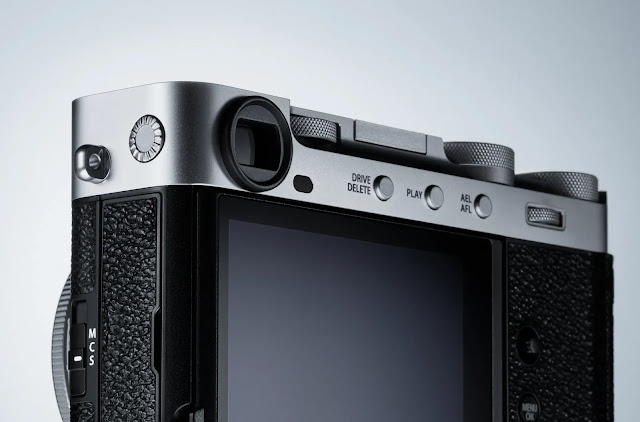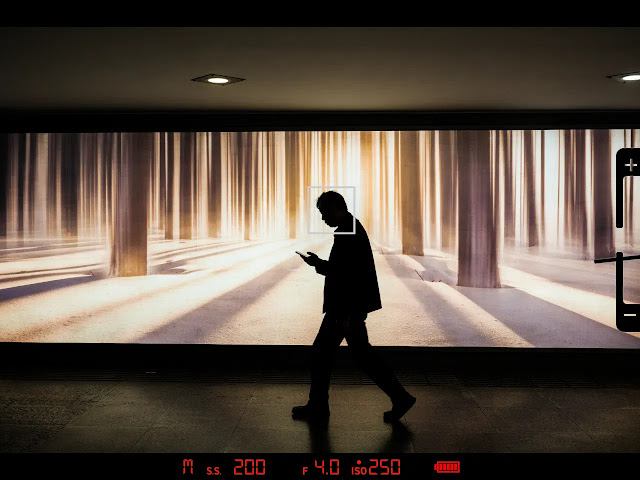Fujifilm X100VI or X-E5? THAT IS THE QUESTION!
Fujifilm’s X-Series cameras have long been popular among photographers who prioritize aesthetics, color science, and a tactile shooting experience. With the release of the X100VI in FEB 2024 and the X-E5 last month, many photographers are wondering which one to choose.
The X-E5 is the sixth generation of the Fujifilm X-E series. Yes there was a X-E2s in between the X-E2 and X-E3.
The first X-series camera I personally owned (and still do!) was the X-E1, which would turn out to be the beginning of my change in camera system from Nikon DLSRs to the new mirrorless X-series system 12 years ago .
In February 2021, I wrote a comparison blogpost between the X-E4 and X100V (check it out here).
Over 4 years later, the similarities between the X-E and X100 series are even closer -especially since Fujifilm also released a brand-new pancake lens with the X-E5; the XF23 f2.8.
I recently used both the new camera and lens for a couple of weeks and like to try and answer the question which camera to get: X-E5 or X100VI? You can find some sample images shot on the X-E5 at the end of this post.
While both cameras feature Fujifilm’s latest 40MP X-Trans sensor they are now also aesthetically closer than ever. Let’s dive in deeper...
At the heart of this comparison is one key difference:
X100VI comes with a fixed 23mm f/2 lens (35mm full-frame equivalent).
X-E5 is an interchangeable-lens camera, compatible with all Fujifilm X-mount glass.
Why it matters:
The X100VI simplifies your photography—just pick it up and shoot. It removes decision fatigue and helps you focus purely on composition and moments.
The X-E5 offers flexibility. You can shoot wide, telephoto, macro, or vintage manual lenses—all with the same body.
🟢 Choose the X100VI if you want a minimalist, all-in-one street or travel camera.
🟢 Choose the X-E5 if you want lens variety for different genres of photography.
2. Design and Build Quality
Both cameras inherit Fujifilm’s retro design language and feel premium:
The X100VI had a solid metal build with an optical + electronic hybrid viewfinder. The latter is unique across all camera brands. Both EVF (3.69M dots) and LCD (1,62M ) are of a slightly higher resolution than the X-E5
The X-E5 has a precision built single piece aluminum top plate; similar to the much more expensive GFX100RF. It does however only have an electronic viewfinder (EVF) which is 2.36M dots. The flip LCD screen (1.04M) also flips 180 deg up for selfies and vlogging, which can't be done on the X100VI.
3. Buttons and Dials
Both offer manual dials, although with some important differences:
- The X100VI has a nice combined ISO/Shutter speed dial.
- The X-E5 doesn't have a dedicated ISO dial but does have a more functional control lever at the front right of the camera. Like on the GFX100RF, the lever can be used for a short and a long push; providing 5 different functions including the center button.
Not sure if this can be done with the present hardware but would love to see the extended use of the control lever on the X100VI as well. Would be a great illustration of Kaizen, which surely has been more limited the last years...
Lastly the X-E5 has a brand-new Film Simulation/Recipe dial on the top plate. One can select some of the more popular Film simulations but also 3 different programable Film recipes. Together with the 7 Custom settings in the menu, this makes for 10 different Film recipes!
4. Image Quality & Sensor
Both cameras feature:
40.2MP X-Trans CMOS 5 sensor
X-Processor 5
Fujifilm’s beautiful film simulations like Classic Chrome, Acros, Nostalgic Neg, and Reala Ace.
There’s no difference in raw image quality from a sensor standpoint—you’ll get outstanding color, detail, and dynamic range with both. Obviously image quality will vary on the X-E5 depending on the lens used.
5. In-Body Image Stabilization (IBIS)
Here’s good news: both cameras include IBIS, but with a slight difference in performance.
X100VI offers up to 6 stops of stabilization
X-E5 offers a slightly better 7 stops of stabilization in the center of the frame and 6 on the outer edges. Fujifilm states they are using an updated gyro to detect roll motion and upgraded algorithms for better performance.
While I personally I did not see any real differences between both cameras, IBIS is especially useful for:
Handheld low-light photography
Slower shutter speeds without blur
Shooting with non-stabilized prime or manual lenses
Steady handheld video capture
🎯 Verdict: Both are strong performers, but the X-E5 edges ahead with its ever so slightly more effective 7-stop IBIS.
6. Handling & Shooting Experience
X100VI: Designed for immersive, intuitive shooting;
X-E5: More streamlined, modern control layout. It’s a great body for beginners and enthusiasts, especially when paired with a small prime lens like the XF 27mm or 35mm f/2. New items such as the New Classic Display mode are unique to the X-E5, which provides a clean viewfinder image with key info at the bottom of the frame; see image below. Standard view modes found on other X-series cameras are still available as well.
You won’t get the hybrid viewfinder magic of the X100VI, but the X-E5 remains a joy to use.
7. Video Performance
Both shoot 4K video, but:
The X100VI’s fixed lens and IBIS make it a great all-in-one solution for casual handheld video.
The X-E5 performs just as well—and benefits from IBIS too—but will require a suitable lens depending on your needs.
🎥 Neither is a dedicated filmmaker’s camera, but both are perfectly capable for vlogging, travel clips, and B-roll content.
8. Price / Value Availability
X100VI: At launch the X100VI was around 6170,-AED. The camera is however largely out of stock all over the world. Inflated prices are now well above 8000,-AED (2180,-USD) if you can even find one.
X-E5: At launch the X-E5 with the XF23 f2.8 lens is 6700,-AED and 5900,-AED for the body only.
💡 Tip: If you already own Fujifilm lenses, the X-E5 is the more economical choice. If you’re starting from scratch and prefer a self-contained creative tool, the X100VI may justify the investment - if you can find one!
Who Should Buy the X100VI?
✅ Street photographers
✅ Travel photographers who want one camera, one lens
✅ Fans of Fujifilm’s hybrid viewfinder
✅ Shooters who value simplicity and elegance
✅ Those seeking a premium, distraction-free creative experience
Who Should Buy the X-E5?
✅ Beginners entering the Fujifilm ecosystem
✅ Photographers who shoot across genres
✅ Those wanting to build a lens collection
✅ Creators looking for compact IBIS-equipped video/stills hybrid














Comments